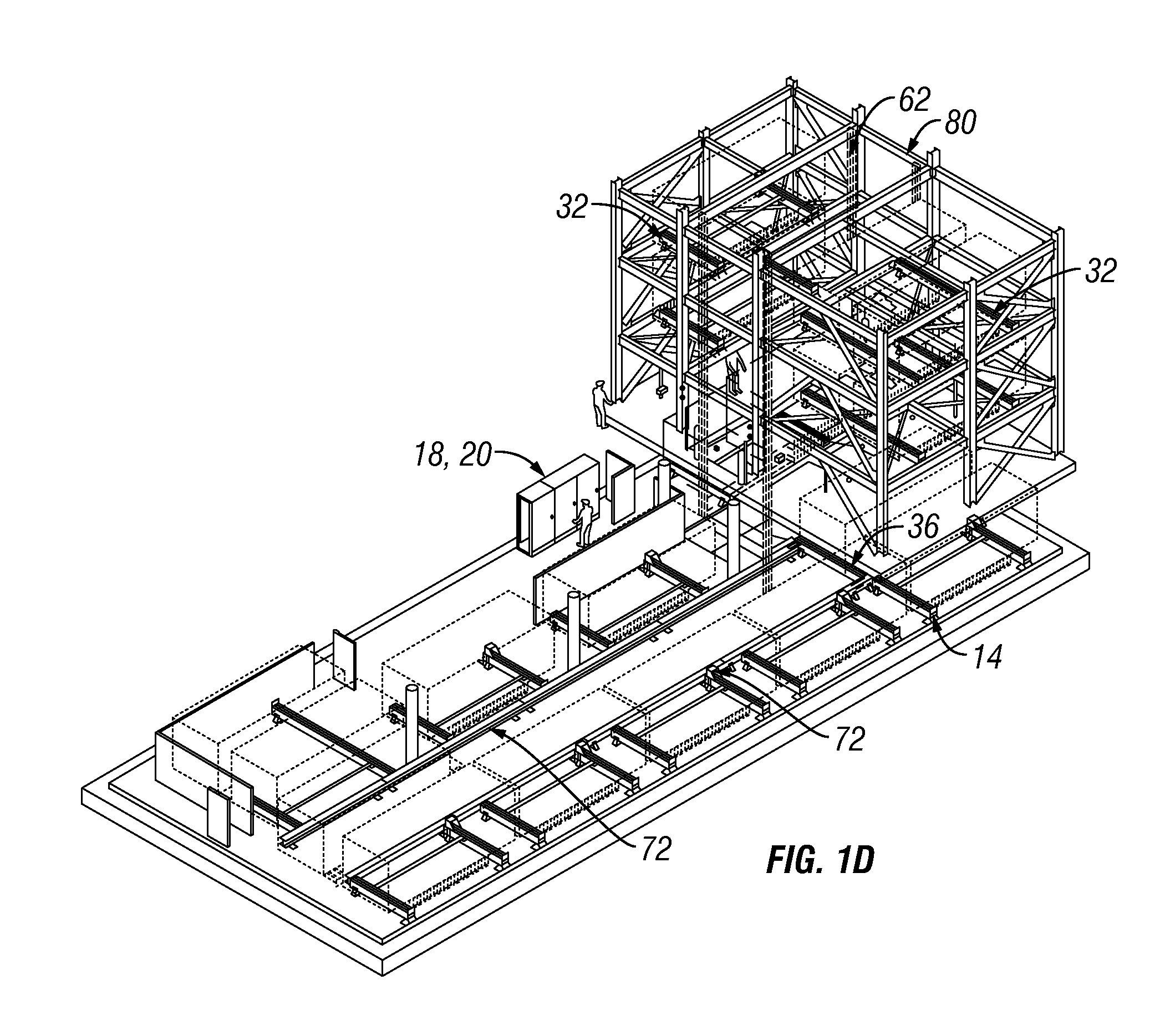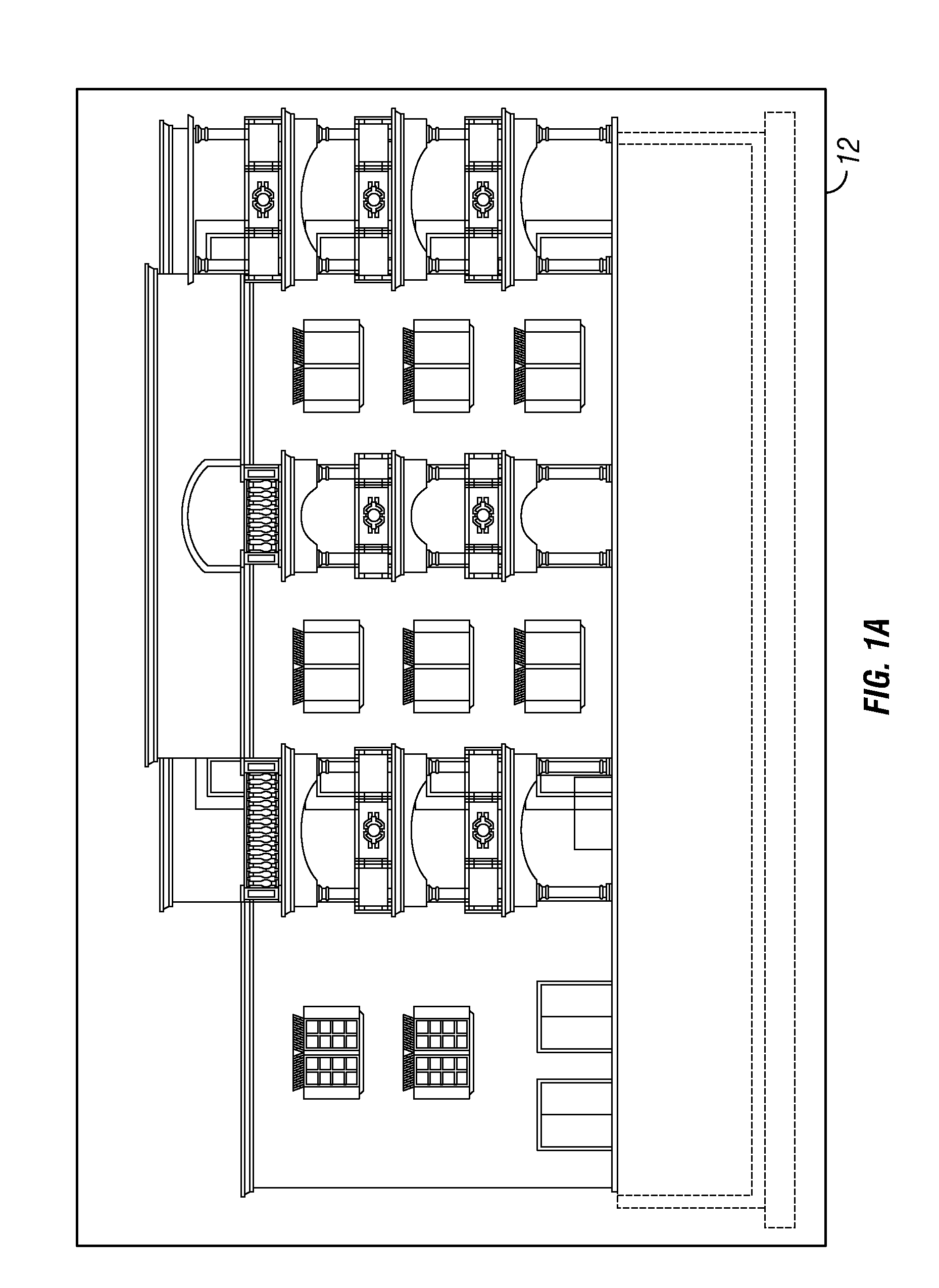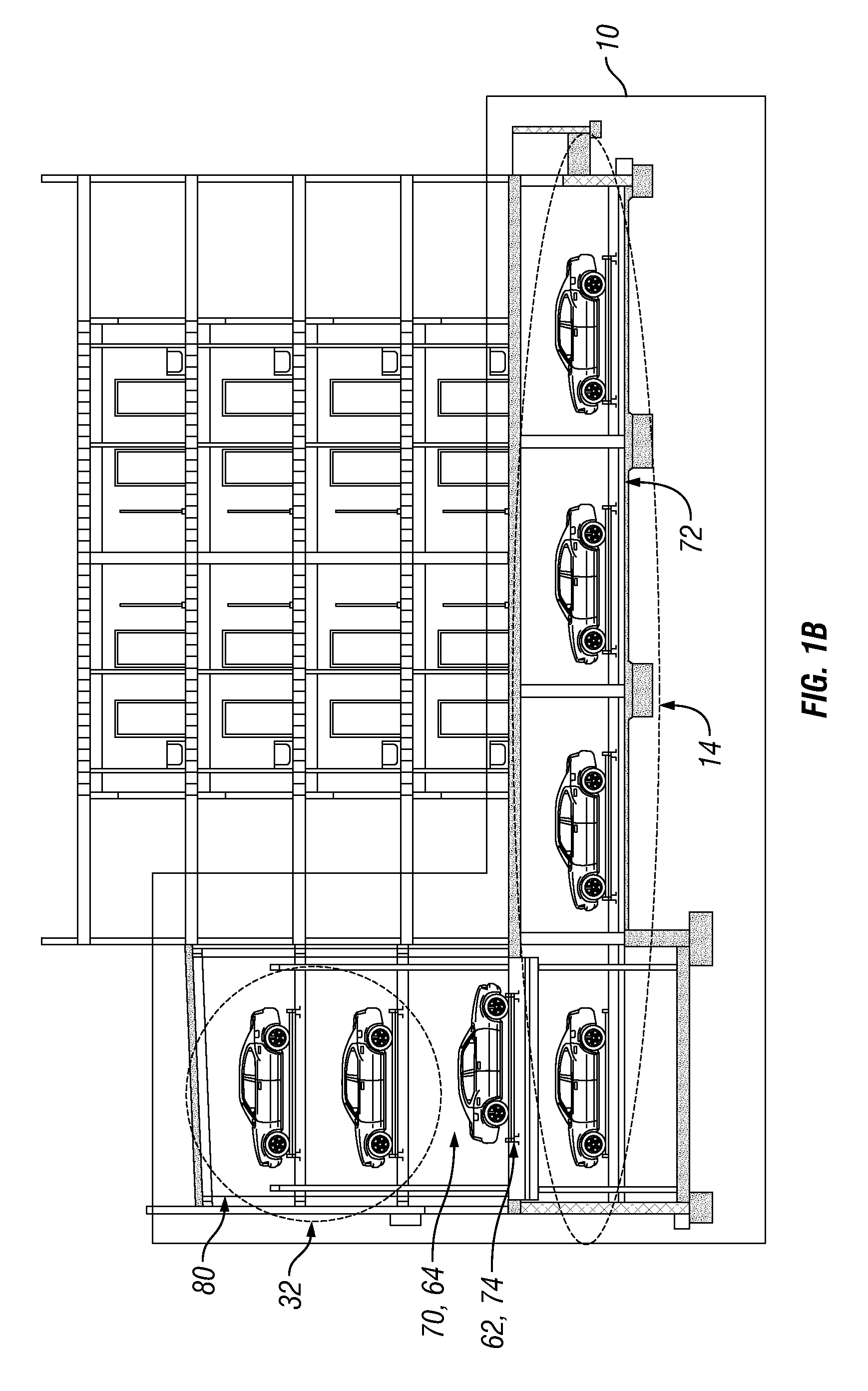Automated parking system
a technology of automatic parking and parking system, which is applied in the direction of instruments, building types, constructions, etc., can solve the problems of affecting the throughput of the garage, insufficient to handle the queues that may occur, and affecting the use of empty pallets
- Summary
- Abstract
- Description
- Claims
- Application Information
AI Technical Summary
Benefits of technology
Problems solved by technology
Method used
Image
Examples
Embodiment Construction
In one embodiment of the present invention, an automated parking system 10 is provided for a parking structure. The automated parking system 10 includes a rack structure that is integrated as part of the parking structure.
The automated parking system 10 can include: main control panels 18, shuttle control panels 38, lift control panels 58, loading bays 64, lifts 72, turntables 74 (turntables can be integrated into the lift, shuttle, or loading bay), shuttles 36, powered storage rack CDLR conveyors 14, non-powered storage rack CDLR conveyors 14, and the like. FIGS. 1a,b,c, and d and 2a,b,c, and d illustrate two embodiments of the automated parking structures 12 and there automated parking systems 10. The automated parking system 10 can be a pallet based system. The designed pallet can be transferred throughout the automated parking system 10 by turntables, lifts and shuttles to the various storage cells. Each piece of equipment can be equipped with a chain drive live roller (CDLR) co...
PUM
 Login to View More
Login to View More Abstract
Description
Claims
Application Information
 Login to View More
Login to View More - R&D
- Intellectual Property
- Life Sciences
- Materials
- Tech Scout
- Unparalleled Data Quality
- Higher Quality Content
- 60% Fewer Hallucinations
Browse by: Latest US Patents, China's latest patents, Technical Efficacy Thesaurus, Application Domain, Technology Topic, Popular Technical Reports.
© 2025 PatSnap. All rights reserved.Legal|Privacy policy|Modern Slavery Act Transparency Statement|Sitemap|About US| Contact US: help@patsnap.com



